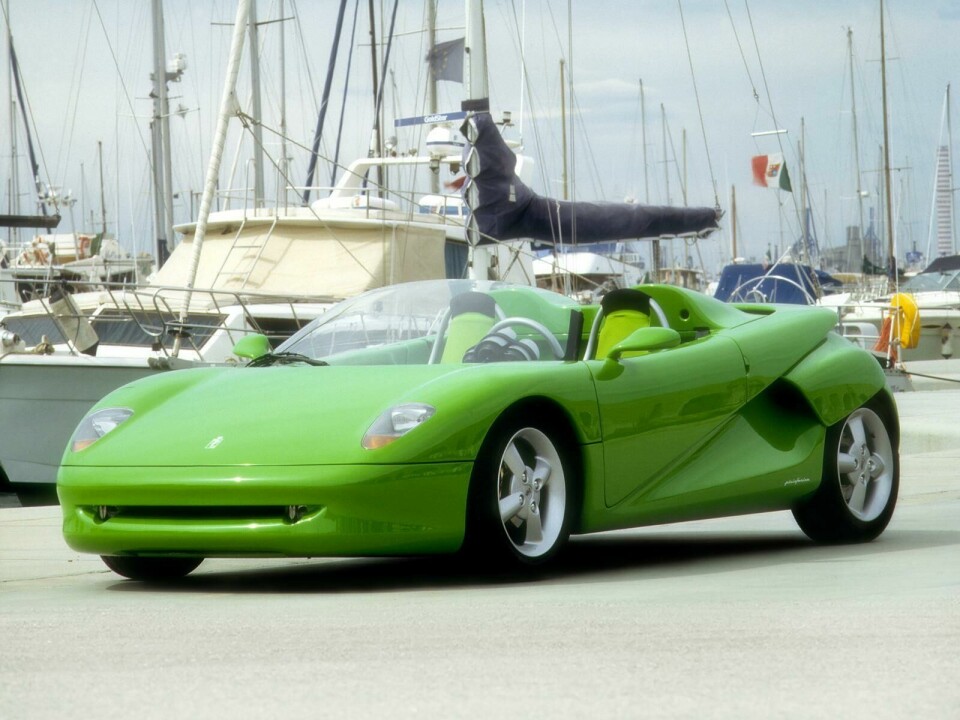
Concept Car of the Week: Pininfarina Ethos 1 and 2 (1992, 1993)
Exterior designer Stephane Schwarz talks us through two of his early works at Pininfarina
In the early 1990s, Pininfarina set out to showcase its prowess not just as one of the world’s premier design houses, but as a creator of whole vehicles packed with innovative design and engineering solutions. It did this with a series of appropriately-named Ethos concepts. The exteriors of two of the three cars were designed by Stephane Schwarz, who would go on to work at Nissan Design Europe, and now holds the position of design director at Zagato.

Back in 1991, Schwarz was a junior designer at Pininfarina, having just graduated from Art Center’s now-closed European college. He was tasked with the brief to design a car that showcased Pininfarina’s know-how in a fun but environmentally-friendly way.

“The car was inspired by the great Italian tradition of the barchetta,” says Schwarz. “I was not asked to follow any particular aesthetic direction, just one that communicated fun and perceived lightness. The car I sketched was actually pretty child-like but very spontaneous, but one theme I quickly came to like was the car’s rear graphic that looks like a horse saddle sitting over the rear axle. At the time, we had the [Pininfarina-designed] Ferrari Mythos concept in the studio, and I really liked the way that car’s design featured intersecting volumes.”

The Ethos was an exercise in simplicity, with very clean surfaces and headlamps that featured very little in the way of design intervention. “It would have been nice to do more technical lamps,” adds Schwarz. “However, a friend of mine recently saw the car in the Pininfarina museum and said he really liked the simplicity of the lamps, and how if they’d been more complex they would have dated the design more obviously.”

The car’s stripped-back interior was completely complimentary to the lightweight aesthetic of the exterior. “The interior was the work of Davide Arcangeli, who is sadly no-longer with us,” says Schwarz. “It was lightweight, really minimalist and based around this one horizontal extrusion running across the IP to which things like the gauge pack were plugged in to. The lightweight theme also carried on with the seats, which used a scuba neoprene fabric stretched over a metal frame – it was a really ‘outdoor’ treatment.”
The car is remarkably relevant now, as it was built around a lightweight chassis and weighed just 700kg in total, and was powered by a prototype orbital engine built by a partner in Australia. A sustainable water-based green paint was chosen to help communicate the car’s eco credentials.

The Ethos 1 was shown at the Turin Motor Show in 1992. However, this was to be followed by a second concept, which debuted at the Geneva Motor Show a year later, that prioritised aerodynamic efficiency, reinforcing the fact that Pininfarina was the first studio with its own wind tunnel.

“The idea with the second car was to add an extended overlay to its rear, like an extra layer of skin covering its tail,” adds Schwarz. “As we were going for the lowest Cd, I knew we’d have to add a roof, and everything from the A-pillar back was different.
“The beltine was unchanged and the wheelbase was the same, but it had a higher roof and closed wheels, although the design of these was meant to reference the Ethos 1. We chose a cleaner ‘blue sky’ colour that was very straightforward, as we wanted it to appeal to and be easy to understand for young people.”

Both cars featured tyres that were specially-made by Goodyear. These incorporated the delightfully of-its-time Ethos logo script. The concepts now reside with Pininfarina, alongside a third car which was designed after Schwarz had left to join Nissan Design Europe, then based in Munich. The Ethos 3 was a city car, created to show the design house’s diversity, and was launched at the 1994 Turin show.

Interestingly, Schwarz’s return to Italy and the Zagato design house appears to be driven by a desire to rediscover some of the design freedom afforded in his years at Pininfarina:
“Zagato was a chance to rediscover some of the sponteneity that I lost during my time in the corporate world. When too many people get involved it dilutes the essence of the project.”
We await with interest to see how this will manifest itself in the car that he’s working on right now, to be unveiled at the Frankfurt Motor Show in September.




